한식 읽기 좋은 날
Vol 60. The Joy of Grilling
Grilling, the Oldest Way to Cook Raw Food
Fire and HANSIK
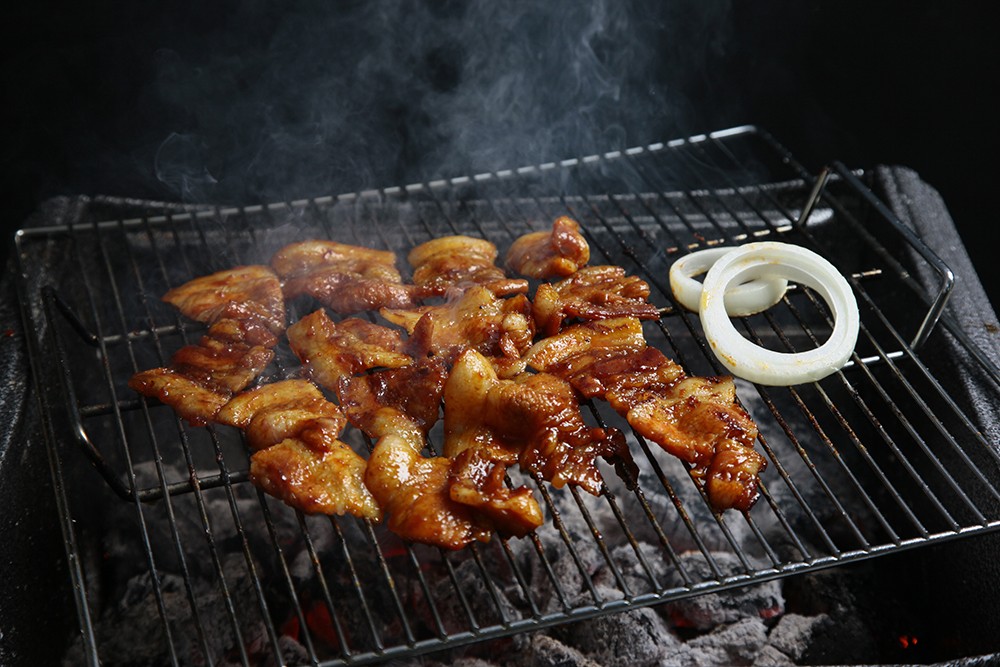
Fire revolutionized how humans live. Although the sight of a lightning strike or an exploding volcano would initially have been frightening, ancient Koreans eventually learned about the usefulness of fire. They began using it to dispel the cold, darkness, and attacks by ferocious animals. Another area that was changed forever by fire was culinary culture—it marked the beginning of eating cooked food.
Article Seo Dongchul (Editorial Team) Sources Encyclopedia of Korean Culture, Big History (Kim Seohyung), Korea’s Everyday History as Seen Through Food (Yoon Deokno), Bulgogi: The Cultural History of Meat-Grilling in Korea (Lee Gyujin, Cho Misuk)
The deliciousness of flame-cooked food
Ancient humans’ first experience of meat cooked over a fire would have been a life-changing one. They would have been impressed by the softness, flavors, and fragrances of the meat, which are incomparable to what they are when the meat is eaten raw. People started making fires with embers, which were in turn used to cook various kinds of meat and other edibles. It was the birth of humankind’s oldest cooking technique: grilling.
Cooking food involves far more than simply changes in flavor: it is closely connected to the development of humankind. By consuming flame-grilled food, humans became able to protect their bodies from pathogens as well as consume more meat. Cooked meat was easier to digest, which meant that more nutrients could be consumed. This led to a sharp increase in cerebral capacity, which allowed humans to evolve to a higher level. Many think of biped walking and the ability to use tools as human characteristics. Both qualities are, however, present in several primate species. What makes humans unique is their ability to cook food with fire.
An indispensable tool and object of worship
Ancient Koreans valued fire so much that they worshipped it. An ember was considered an invaluable household treasure that should never be allowed to go out. Indeed, it was customary for an ember to be passed down from mother-in-law to daughter-in-law. When the eldest son of a jongga (clan’s head household) moved out of his father’s home, the first object to enter the new house was a brazier with an ember inside. Although it is rare today, until a few decades ago, there was a tradition of customers gifting matches to a newly-opened/moved store—a remnant of the pre-modern tradition of gifting embers.
Fire was also a household deity. The buttumak, a raised clay-and-stone structure located over the agunggi (fireplace) with a large hole for hanging the cauldron, was considered the most sacred place in the kitchen. No one was allowed to sit on the buttumak, and keeping it immaculate was regarded as the homemaker’s top priority. It is not clear exactly when Koreans began to worship the kitchen god at the buttumak, which was done by placing a small bowl of water on it and then praying to the kitchen god. Slash-and-burn farmers in Gangwon-do had an area of the buttumak that was dedicated to protecting embers (called hwatu or hwati). The kitchen god was also believed to have the ability to cleanse impurities. After returning from a long journey or funeral, it was customary to first go to the kitchen to prevent misfortune from coming into the home.
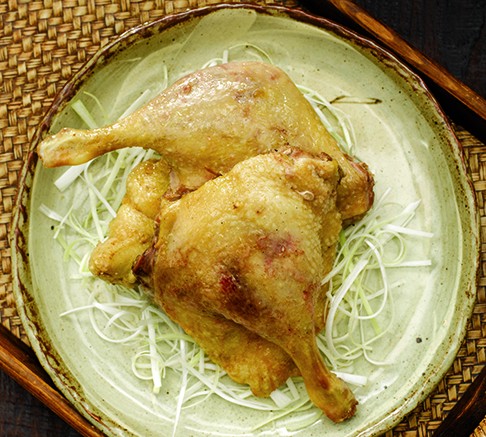
Origui(Grilled Duck)
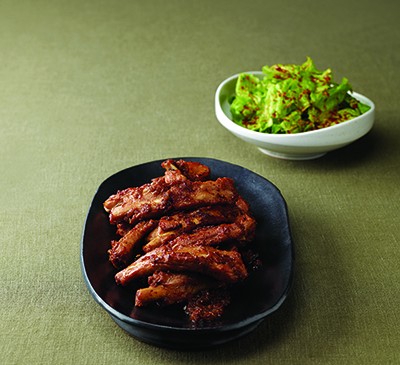
Dwaejigalbigui(Grilled Spareribs)
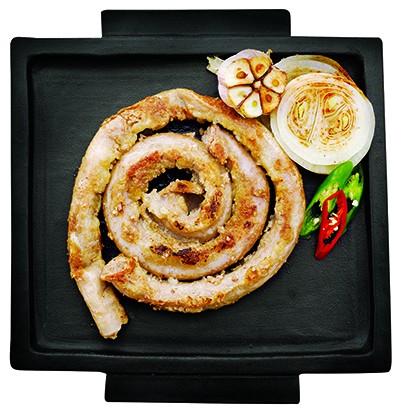
Gopchanggui(Grilled Beef Tripe)
History of the joy of grilling
Grilled food has a long, rich history in Korea. In primitive times, people grilled ingredients gained by hunting and gathering whole. The next step in the development of grilling is believed to have been putting a flat stone over a fire and, after it was heated sufficiently, placing fish, meat, and/or tree-picked fruit on it. From the Three Kingdoms Period, there are records of people raising livestock (e.g. ox, pigs, chickens, sheep, goats, ducks). An improvement in boat-making technology in the third and fourth centuries made it possible to travel farther from land to catch fish, which would have broadened the range of ingredients that could be grilled. The introduction of Buddhism, however, slowed down the increasing meat consumption—a tendency that grew in the Goryeo dynasty, when Buddhist culture reached its zenith in Korea, resulting in increasingly smaller consumption of meat-based dishes.
This situation was reversed in the Joseon dynasty. The new regime’s crackdown on Buddhism to promote Neo-Confucianism shifted the focus of culinary culture from the tea ceremony to the juansang (liquor served with snacks or food). Another development was the revitalization of grilled foods and, in particular, a diversification of grilling techniques. Jeungbo Sallim Gyeongje (Revised Farm Management), a farming manual compiled by Yu Junglim, a scholar who lived during the reign of King Yeongjo, as a longer version of Hong Manseon’s Sallim Gyeongje (Farm Management), includes a technique that involves mixing a flour batter with oil, soy sauce, salt, green onion, and pepper, coating meat with it, skewering the batter-covered meat, grilling it over a weak fire, and then removing the batter before eating. Gyuhap Chongseo (Women’s Encyclopedia), which was written during the reign of King Sunjo by a woman known as “Lady Yi Bingheogak” and includes a section on recipes, explains how to re-grill meat after cooling it briefly in cold water as well as how to grill meat that is coated in clay. Another cookbook published in late Joseon also explains how to grill meat that is wrapped in mulberry paper/clay and how to grill pine mushrooms after wrapping them in oak or gourd leaves and then coating the surface in clay.
Favorite grilled foods of Korea
Koreans generally enjoy grilled livestock meat, including beef, pork, mutton, chicken, and duck, and innards, such as intestines (e.g. daechang, gopchang), heart (yeomtong) and kidneys (kongpat). In terms of fish, mackerel, gizzard shad, eel, and pomfret are popular. Wild mountain greens (e.g. shiitake mushroom, pine mushroom, bellflower root, deodeok) and dried seafood (e.g. laver, pollack, whitebait) are enjoyed as side dishes prepared by salting or applying a spicy seasoning and then grilling.
There are also various special grilling techniques. Jipbulgui (rice straw grilling) is a method that involves grilling meat or fish over a fire made with rice straw, with the most popular types being samgyeopsal from Jeollanam-do and sea eel from Busan. Duck or chicken, after removing the intestines, can be filled with Oriental medicine ingredients or nuts, wrapped in one layer of paper or tin foil, and then coated in a layer of clay. “Clay-grilled” meat has the dual benefit of a savory flavor and absence of fatty oil. Nakjihorong, for which seasoned octopus is wound tightly around a piece of straw or wooden skewer before being grilled, is a famous delicacy in the coastal regions of Jeollanam-do.
Today, there is virtually no limit to the options available for eating out. Until quite recently, however, restaurant dining almost always meant grilled meat. Grilling sliced beef ribs, with or without seasoning, is still very popular, while samgyeopsal (made with the flesh attached to a pig’s ribs) is known as a “people’s meat” for its relatively affordable price. Although it is rather less popular than grilled beef ribs or samgyeopsal, grilled seasoned pork breast (dwaejigalbi), was the dominant option of the 1960s and 1970s. Bulgogi, or grilled seasoned beef that was pounded to make it paper-thin, is still the subject of active debate in terms of its origin and etymology. Nevertheless, there is no denying the fact that it is Korea’s most well-known grilled dish.
One lesser-known but very important merit of grilling meat is that direct contact of the meat with the fire’s heat hardens the proteins on the meat’s surface. This “locks in” the meat’s juices, which minimizes nutrient loss. The “flame flavor,” or the unique fragrance created by the grilling process, piques the appetite. There is also the social importance of grilling meat as an occasion, both thousands of years ago and today, for people to share food and conversation. How about a meal of grilled meat tonight with family or friends? It doesn’t matter what kind of meat is served!
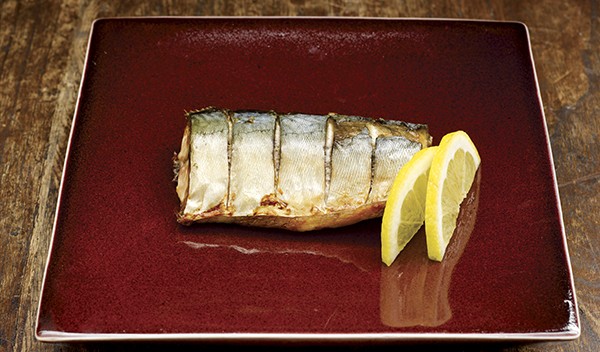
Godeungeogui(Grilled Mackerel)
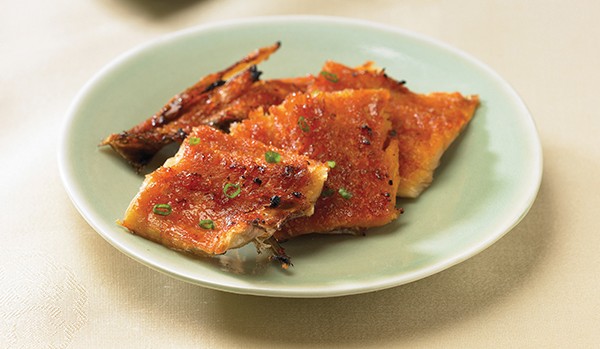
Hwangtaegui(Grilled Dried Pollack)

 한국어
한국어
 English
English






